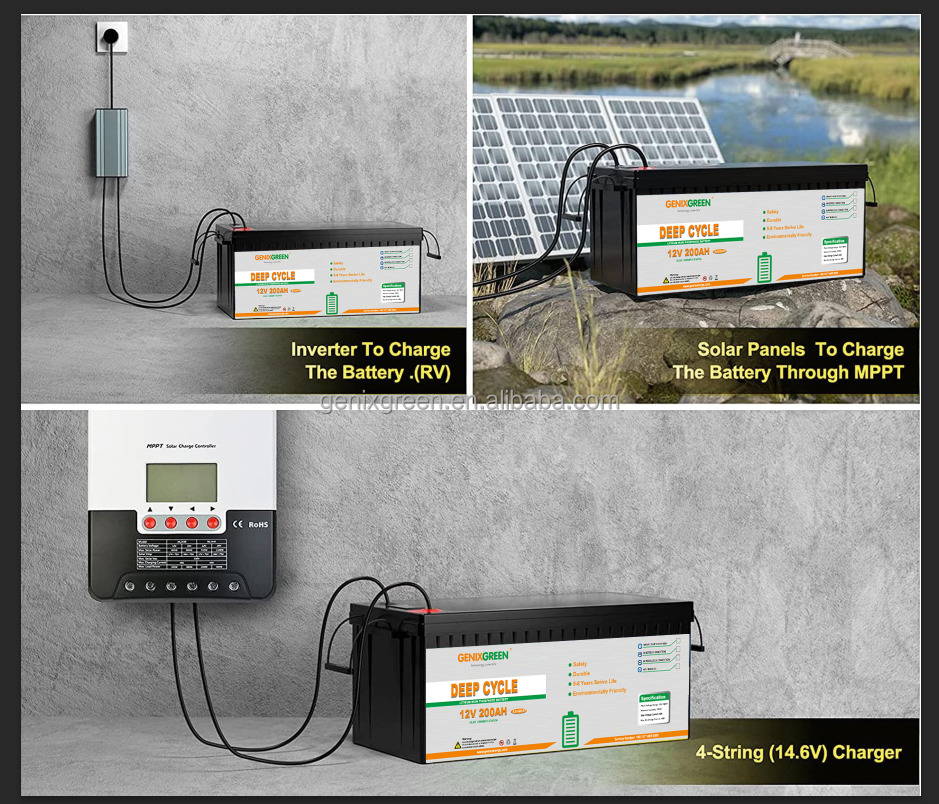Released on Jun. 01, 2022
Do you want to buy a new battery for your laptop or smartphone? Then you will definitely choose a rechargeable battery. But how much do you know about rechargeable batteries? Do you understand your options? Consider the following.
Did you know that until the late 1990s, NiCds were the only rechargeable batteries suitable for home use? However, they were poorly equipped. The batteries were running high-drain devices, but they still couldn't hold power for long periods of time. In addition, they contained toxic cadmium, which was considered dangerous. As the century drew to a close, NiMHs were introduced as the savior of this tyranny.
NiMHs quickly became popular because they offered three times the capacity. At the same time, they contained non-hazardous materials, making them safer around the home. Best of all, they retail for roughly the same price. niCds are gone, and today you can find NiMHs on Amazon and other select outlets.
PowerGenix has introduced NiZn replacement NiMHs in the market. the strong point is to maintain high voltage. Therefore, they are a better choice for devices that cannot be supported by 1.2V NiMHs.
You will find them more in digital cameras, thus providing them with faster flash power. They are also found in flashlights; they burn brighter. However, high voltage shouldn't get you too excited too soon. It can be both good and bad. Voltages can easily burn out photosensitive devices.
They also have many other drawbacks. For example, PowerGenix only made them in AA size and had reliability issues. They stopped making them after two years. Some off-brands are still available on Amazon, as well as some Chinese brands on e-Bay. Today, they are found in different shapes and sizes.

Li-Ion batteries are probably the most common type of rechargeable battery. Because of their high capacity and power, they have swept the market. common batteries such as AAA, AA, C and D have a voltage of 1.2 to 1.5V, while Li-Ion batteries have a voltage of 3.7V. this means that using them in a device means that using them in a device that uses 1.5V can easily blow up the device.
Lithium-ion batteries are made for the devices they are designed for. They are also useful for those building their own devices with high power requirements. Lithium-ion batteries have a specific naming system designed to avoid confusion based on device requirements. You will find the following names.
10440 for size AAA
AA for size 14500
18650 for sizes larger than AA but smaller than 25000 (size C)
They also require a special charge. Using NiMH chargers for Li-Ion batteries may not work properly or may damage the battery.
All NiCads are specifically rechargeable. They are not many, as they have been replaced by NiMH. They have no advantages over NiMH. Their poor capacity and toxic nature make them very disappointing. In any case, they are not easy to find because no one even wants them. They can provide enough power to light up power-hungry devices, but they don't last very long.
RAM stands for rechargeable alkaline manganese. They were introduced in 1992 to compete with NiCds. They claim to be the best; with reusability, high voltage and long alkaline shelf life. But they are not the only ones with such. the shelf life of LSD NiMH is much longer. NiZn, on the other hand, has a better voltage. There seems to be no source of RAM today.
The three factors that determine the best battery include
-NiMH; ranging from 1200 to 2700 mAh
Ni-Zn; 1500 and 700 mAh for AA and AAA, respectively.
-LiPo; up to 5000 mAh. The latest chemicals such as LiPo have higher capacities.
-Nickel-hydride; highest self-discharge rate
-Nickel-zinc; about 8% per month
-Lithium; approx. 5% per month depending on chemistry.
-NiMH; 1.2V nominal
-NiZn; 1.65V nominal
-Lithium; 3.7V and above.
-NiMH; theoretically provides hundreds of cycles. Affected by overcharge. They also have a memory effect.
-Nickel-zinc; no specified depth of discharge. Can give 100-500 cycles
-Lithium; can give up to 700 life cycles
Based on this, lithium-based rechargeable batteries are the best. They are readily available and can power anything that requires high power.
The benefits of rechargeable lithium batteries include
Highest energy density. Each new development has the potential to increase capacity.
Relatively low self-discharge rate. It is less than half the record of NiCd and NiMH.
Low maintenance. Most lithium batteries do not require special attention. They do not overcharge or deep discharge easily and respond fairly to physical abuse.
Navigation
Mob: +86 186 6629 0033
Tel: +86 0769 85544410
Fax: +86 0769 85544410
E-mail: info05@zwaynenergy.com
WhatsApp: +86 137 1409 6556
Wechat: +86 186 6629 0033
Office: 16th Floor, Yunhua building, shajing Town, Shenzhen, PRC
Add: Room 101, Building 1, No. 18 Hu Nan Road, Changping Town, Dongguan City, Guangdong Province
Follow Us